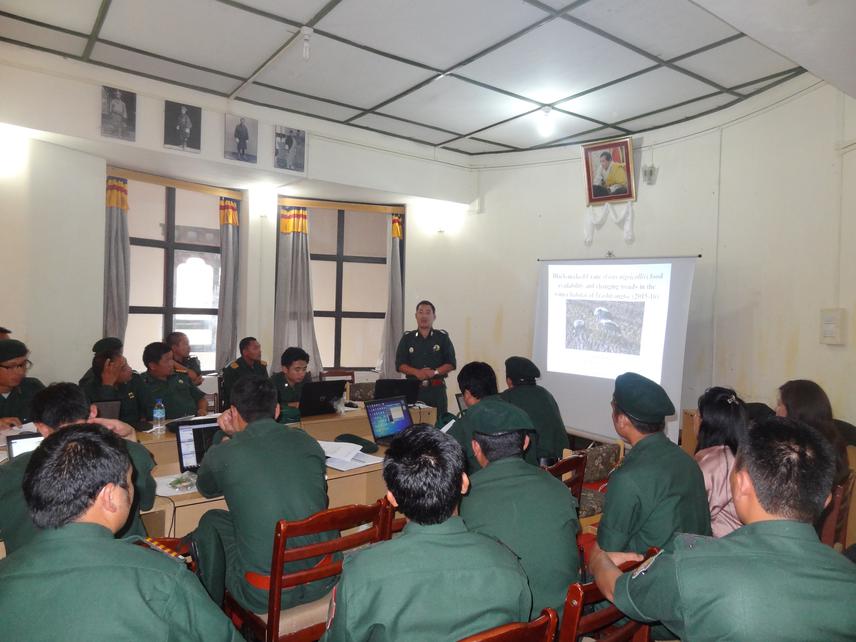Sangay Drukpa
The aim is to see the status and population trend of Black-necked Crane in Trashiyangtse wintering habitat over the years; to see the relationship between availability for food (fallen grains) and changing behavior in the feeding areas over time; and to analyze farmer’s perception on the preferred variety of rice grown in the feeding areas.

The Black-necked Crane (Grus nigricollis) is one of the totally protected species in the world. It is last of the 15 crane species to be discovered and the least effort has been put on this species for its ecological, biological and demographic researches (Sherub, 2009). It is an endangered (highly vulnerable) species (IUCN). The existing population is estimated at 10,070 - 10,970 individuals globally (Birdlife International, 2012) of which Bhutan hosts more than 500 individuals every winter. Due to its single population that is declining (Buzzard et al., 2012) and the loss and degradation of wetlands the bird is evaluated as Vulnerable (VU) species in the world.
As per Bishop (1996), Black-necked Crane is found at elevations between 1900 and 3950masl in the winter and 2950 and 4900masl in the breeding season. In Bhutan it is found between 1770 and 3050 masl (Inskipp et al. 1999) and the main wintering grounds of BNC in the country are in Phobjikha under Wangdue Phodrang District (western region), Chumey under Bumthang District (central region) and Bumdeling under Trashiyangtse District (Eastern region). The Crane habitats in Bhutan are entirely different from those of the summer breeding habitats in the Tibetan Plateau. The habitat in Trashiyangtse comprises of marshes, riverine shingles, flowing rivers, sand bank, paddy fields and ponds. The protection of habitats was found very important and the Royal Government of Bhutan in 2012 declared 141.50 and 113.50 hectares of wetlands in Bumdeling and Khotokha respectively as Ramsar site, a wetland area of international importance.
In winter the cranes depend highly on waste grain gleaned from barley, wheat and rice stubble for their survival (Bishop, 1996). Those cranes visiting Trshiyangtse feed mainly on fallen rice grain in the paddy fields that belong to the farmers. Currently available habitats throughout the Black-necked Crane distribution range is coming under pressure from wetlands drainages for farming and development, changes in farming practices, disturbances from amenities. The BNC population visiting Bumdeling is on gradual decline, and this is of concern. The farmers in Bumdeling and Yangtse blocks are growing more than five different varieties of rice every year but the contribution level from these varieties had never been studied. This year the farmers in Bumdeling and Yangtse are growing more than five varieties. Until now no study was taken up to determine which variety is giving more grain fall for BNC. So, this project will be focused on seeing the status and population changing trends over the years from officially maintained records, identify the variety of rice that gives more grain fall and determine the rate of food depletion in the foraging areas. The farmer’s perception on the preferred variety will also be presented. A sample spot survey and direct counts method (Buzzard et al., 2012) will be used for observing the behavior of cranes and 2.5mx 2.5m random plots will be laid out in the rice fields to determine the available foods and depletion rate through monitoring.